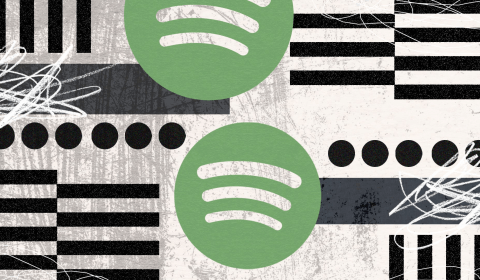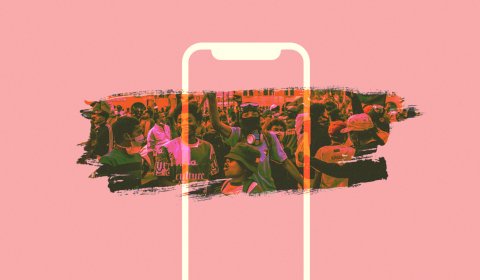it’s a tomato girl brat-but-very-demure glazed donut season y’all.
![]()
Welcome to the latest edition of The Gen Zer. This week we take a look at the “vibe trends” that are seemingly everywhere at the moment. We also take a look at how celebs are boosting voter registration, controversy around the thumbs up emoji, and the Gen Zers using tech to keep tabs on their parents. Read on for more . . .
Vibe trends seem to be everywhere at the moment. Brat summer is the obvious one (or dopamine autumn, if you’ve been following this newsletter) but there are a hundred others you could name, everything from tomato girls to hot rodent boyfriends to blueberry milk nails to a mob wife look.
Vibe trends are colourful, colloquial labels for an ‘aesthetic’. ‘Brat summer’ captures the rebellious, carefree energy of a nostalgic youth. A ‘tomato girl’ aesthetic is all about the sun-kissed, Mediterranean lifestyle featuring vibrant reds and a fresh, natural look. And ‘glazed donut skin’ was coined by none other than Hailey Bieber, the founder of Rhode Beauty, who promoted the term to market the dewy, glowing look her skincare products are supposed to give you.
Beneath the surface, there’s often a marketing-aspect to most of these trends. They’re not always started by founders and marketers, of course, although as soon as they begin to go viral marketing teams jump on the bandwagon. I mean, how many companies have used the word ‘demure’ somewhere in their marketing emails in the past few months? I’m sure I’ve used it in this newsletter at least once or twice . . .
There’s something very natural about all of this, of course. We’re social creatures, and adopting and sharing new labels, new trends and new ‘aesthetics’ is part of how we communicate our changing identities. Cowboys have their cowboy hats, medieval monarchs had their silken tunics and fleurs-de-lys.
@detailstodiefor Replying to @bea 🫂 subtle ways to add medieval aesthetics to your everyday wardrobe ⚔️ #medieval #medievaltiktok #history #fashion ♬ Blue (Da Ba Dee) – Medieval Style – Cornelius Link
Nonetheless, there does seem to have been an uptick in the vibe trend frenzy over the past year or two. Marketers and trend-setters have long since tried to tap into the zeitgeist to engage consumers, but there seems to be a particular flavour to the current run of endless micro trends. It feels faster, more fluid, almost overwhelming at times.
In part, the shift has coincided with large changes in the way we shop and in our general consumer habits. TikTok Shop started in 2023 and has completely changed how many people buy things; you can now hop onto the latest trends, and easily spend your money, without ever leaving the app. This commercial side has spilled elsewhere on the platform, too, with users now complaining that the platform feels more like a virtual shopping mall — with influencers constantly trying to sell you things — than a relaxed space for dance challenges and funny skits. Influencer marketing has further blurred the lines; it’s pretty common nowadays to be marketed to without even realising that what you’re seeing is an ad.
There are positive, fun sides to this cycle of vibe trends, although there are negatives, too. Despite Gen Zers valuing sustainability highly in surveys and on social media, fast fashion is still thriving, driven by the constant demand for new clothes, gadgets and random other things — particularly when it comes to keeping up to date with the latest trends.
Go back a hundred years and there likely wouldn’t be a logo in sight. Shopping was deliberate, and consumption was slower. Lying in bed or sitting on public transport, there wouldn’t be any way for you to spend your money — which, for modern marketers, is a missed opportunity. TikTok Shop is simply the latest way for big corporations to remove the friction from you opening your wallet and removing the cash.
Not all brands are embracing the micro trends, of course. When it comes to investing their time, energy and money, these brands are choosing to focus on longer term things like building a core identity and narrative (one that can stand the test of time and keep invoking a sense of emotion and community) rather than the short term option of endlessly switching from one micro trend to the next. Many, of course, do a bit of both.
Brands like Dickies or Calvin Klein generally ignore the trends and focus on holding onto their original identity. In their TV documentary, Made to Last, Dickies highlighted how their commitment to quality makes them stylish and suitable no matter whether you’re a rancher or a mechanic or a skater. They didn’t put a label on their overall aesthetic — they didn’t try to create a vibe trend — but rather left it open for new generations mould the look as they wish.
These brands remain successful despite not trying overly hard to win with younger consumers — or, maybe, they remain successful because they don’t try too hard. They let new generations of consumers come to them and adopt them in new ways, invoking a sense of ownership as brand and consumers together build a new narrative. Think of how Carhartt went from a workwear company to a staple in the wardrobes of young skaters. They didn’t do this by switching from corpcore to brat summer to demure autumn, but by continuously investing in what already makes them unique and desirable, and by keeping their ear to the ground to grow new macro trends organically, hand in hand with their community.
There’s a balance to all of this, of course. For brands, the challenge is in navigating the trends and staying relevant, without leaving behind their core identity and what makes them unique. For many Gen Zers, the question is more about how to remain authentic and sustainable amongst all the online pressure to constantly keep up with the ever-changing trends.
See also:
- Can book clubs help solve Gen Z loneliness?
- How Spotify are winning with Gen Z
- Gen Zers are causing a boom in… romance
Gen Z around the Web
UK teenagers get two-thirds of their calories from ultra-processed foods (the conversation)
Adults in wealthy countries get more than half of their calories from ultra-processed foods, but a new study suggests that teenagers consume proportionally more UPFs than any other age group. (Ultra-processed foods include products such as sweetened yoghurts, margarine, cereal bars, chicken nuggets and energy drinks.) There have been big pushes for healthier lifestyles recently, though UPFs might be the last stone to fall. Read more
Gen Zer and Millennials are turning the tech-table on their parents (business insider)
While parents have used location-tracking apps to keep an eye on their kids since the tech was invented, Millennials and Gen Zers are now turning the all-seeing eye onto their parents. It’s an interesting twist in the ways that tech is getting ever more involved in our relationships and how we relate to one another. Read more
“At 51, I learned Gen Z find my favourite emoji ‘aggressive’” (i news)
A good example of some of the smaller generational differences that can nonetheless cause confusion and misunderstandings. Older adults ‘misusing’ emojis is nothing new (we’ve probably all seen someone mistake a cry-laughing emoji for an actually-crying one), but the different ways different generations use the thumbs up emoji is an interesting case. For some, replying with a 👍 means okay, sure, etc, though for others it comes across as more blunt or even rude — like a whatever. Read more😬
Celebrities boost Gen Z voting registration via Linktree (pr week)
Linktree and Vote.org recently launched a ‘for-good’ campaign aimed at encouraging young people to register to vote, getting over 10,000 voters to do so in the first week alone. NBA star Stephen Curry, Olympic gold medallist Tara Davis-Woodhall, and Grammy-nominated singer Saweetie were among the celebs who linked their social media bios to a voter registration hub. It’s a great use of the tech. Read more
Gen Z understands how to have a good night out better than the rest of us ever will (i news)
My generation’s love for literature and book culture is something I’ve written about before. Now, as more and more venues offer bookish nights out, Lucy Mangan reflects happily that, as a generation, we might not be a lost cause after all. Read more
![]()
That’s all for this week! Make sure to subscribe for the latest on Gen Z and youth culture, and check out The Common Thred for a weekly roundup of the latest news, trends and thought pieces.

















